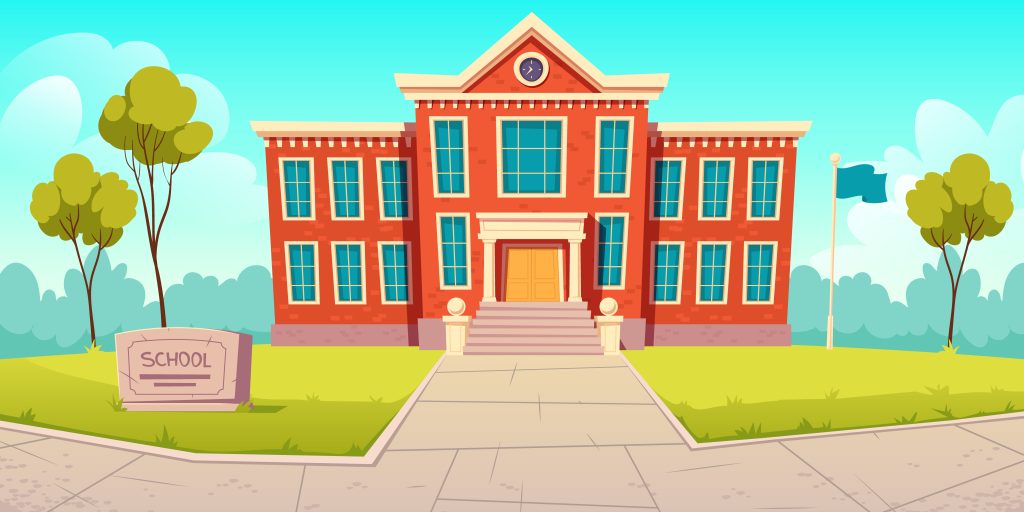🏫Arabic Level 2, Activity 03: “فِي الـمَدْرَسَة / At School” (Face-to-Face/Online)

Description:
In this activity, students will practice studying school vocabulary. They will be able to respond to simple questions related to school, identify school-related vocabulary by looking at images, and they will be able to write a full sentence in Arabic using the vocabulary they are given individually.
Semantic Topics:
Backpack – school – lassroom – this – classmates – teacher – study, حقيبة، مدرسة، هذا، زميل، معلم، دراسة
Grammatical Structures:
plural, like/dislike, this/that, opposites.
Products: School and the educational system in the middle east.
Practices: what are preferable classes? What to wear in class? How to participate in class?
Perspectives: Uniforms are required for schools in Middle Eastern culture, excluding Universities and colleges. But whether you are male or female, it is considered rude to come to school dressed immodestly. You are expected to raise your hand when you have a question or want to participate in class. Usually, Middle Eastern culture has separate schools for males and females.
- Standard 1.1: Students engage in conversations or correspondence in Arabic to provide and obtain information, express feelings and emotions, and exchange opinions.
- Standard 1.2: Students understand and interpret spoken and written Arabic on a variety of topics.
- Standard 4.1: Students demonstrate an understanding of the nature of language through comparisons of Arabic and their own languages.
Idaho Content Standards for World Languages:
- COMM 1.1: Interact and negotiate meaning (spoken, signed, written conversation) to share information, reactions, feelings, and opinions.
- COMM 2.1: Understand, interpret, and analyze what is heard, read, or viewed on a variety of topics.
- COMP 1.1: Observe formal and informal forms of language.
- COMP 1.2: Identify patterns and explain discrepancies between the sounds and the writing system in the target language.
NCSSFL-ACTFL Can-Do Statements:
- I can respond to simple questions related to school.
- I can respond to a question about my preferences.
- I can say my major and my favorite class.
- I can identify and describe objects in Arabic when using provided images.
Materials Needed:
Warm-Up
- Pull up the Google Slideshow and introduce the Can-Do statements for today’s activity.
افتح العرض وشارك شاشتك مع الطلاب، اقرأ شريحة #٢ - Next, ask students to list as many school-related vocabulary words as they know.
بعد ذلك، انتقل الى الشريحة التالية واسأل الطلاب أن يسردو أكبر عدد من الكلمات المتعلقة بالمدرسة التي يتذكرونها. - Start by giving them examples:
مدرسة – جامعة – معلم – يعلم – يدرس – طالب أعطهم بعض الأمثلة وشجعهم
Main Activity
- Each student will choose a number from 1 – 15
على كل طالب أن يختار رقم
2. In slide 4, after a student chooses a number, you will click on it, and it will move you to the slide with the image for the number the student chose.
شريحة #٤ بعد ان يختار كلا منهم رقماً واحداً، اضغط ع الرقم من اختيار اول طالب، ستنتقل الى شريحة فيها صورة للرقم الذي اختاره الطالب
3. The student should either bring a sentence describing the image or answer the question below the image.
الآن، على الطالب أن يختار، اما أن يأتي بجملة كاملة تصف الصورة، او يجب على السؤال اسفل الصورة.
4. After the first student finishes, you will click on the box that says “kick here to go back to the numbers slide” for the next student to choose a number!
بعد أن ينتهي الطالب شجعه (ممتاز!) واضغط على المربع بالاسفل حتى ترجع الى شريحة الأرقام، اختر طالباً آخر ليختار رقماً
5. Repeat that until all students participate. Each student can participate 2-3 times.
كرر التمرين مع كل الطلاب، يمكن للطالب ان يختار رقماً اخر.
Wrap-Up
- Go to slide #20 with the wrap-up questions, and ask students: What classes do you like this semester? Why?
اسأل الطلاب: ماهي الصفوف التي تفضلها؟تحبها في هذا الفصل الدراسي؟ - You can answer the questions, so they have an idea about how to answer.
يمكنك دائماً الاجابة اولاً حتى يعرف الطلاب كيف يجاوبون
End of Activity
- Read Can-Do statements once more and have students evaluate
their confidence.
(Use thumbs up/thumbs down or download our student cards.) - Encourage students to be honest in their self-evaluation.
- Pay attention, and try to use feedback for future activities!
NCSSFL-ACTFL Can-Do Statements:
- I can respond to simple questions related to school.
- I can respond to a question about my preferences.
- I can say my major and my favorite class.
- I can identify and describe objects in Arabic when using provided images.

